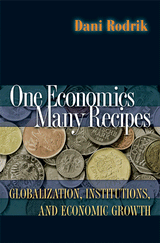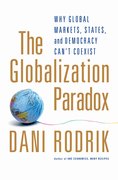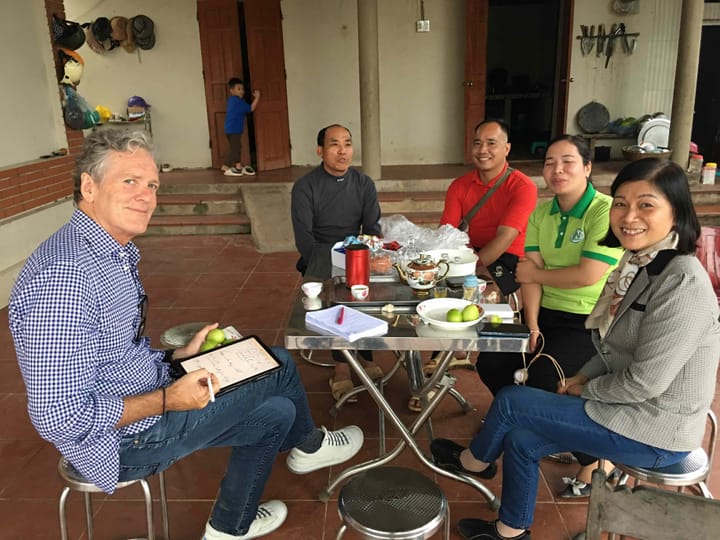Recipes for growth, democracy (entrepreneurship and innovation) in an increasingly integrated world economy
BOOKS REVIEWED
Dani Rodrik (2007) One economics, many recipes; globalization, institutions and economic growth, Princeton University Press, Princeton
Dani Rodrik (2011) The globalization paradox; why markets, states and democracies can’t coexist, Oxford University Press, Oxford
Dani Rodrik is the Rafiq Hariri Professor of International Political Economy at the John F. Kennedy School of Government, Harvard University in the USA. These are his most recent publications dealing with the themes of globalization and national economic growth. Neither of these publications specifically addresses the concerns of entrepreneurship or innovation. However, they do provide an important critique on the roles of markets and government in promoting economic growth, which can help us draw the connections between creating an environment that is conducive to entrepreneurship and innovation, and the broader goals of growth and development. “It is innovation”, he says, “that enables restructuring and productivity growth” (One Economics, p. 101).
Rodrik is a consistent voice for the need for government engagement in strategies for growth. Markets and governments are two sides of the same coin. Markets, be they global or domestic, require social institutions to support them. In One Economics, Rodrik presents his views from the start, including his belief “in the ability of governments to do good and change their societies for the better. Government,” he says, “has a positive role to play in stimulating economic development beyond enabling markets to function well” (p. 4).
In the chapter on growth diagnostics, co-authored by Ricardo Hausmann and Andrés Velasco, the notion of the binding constraints to growth is presented. Reforms to address these constraints should focus on growth, turn general operating principles into country specific strategies, and present priorities. This growth-diagnostic framework encompasses all major strategies of development and clarifies the conditions in which they are likely to be effective.
 The various components of these strategies are discussed in the chapters that follow. These include industrial policy and the role of institutions. He then turns his attention to globalization.
The various components of these strategies are discussed in the chapters that follow. These include industrial policy and the role of institutions. He then turns his attention to globalization.
On industrial policy, Rodrik is an advocate, and in some ways he is swimming against the tide of general opinion on industrial policy in the period in which this book was written. This tide has clearly turned in the aftermath of the 2008 global financial crisis. While he recognises the weaknesses and failures of past attempts at industrial policy in many developing countries, although certainly not all, his emphasis is on the process of industrial policy rather than the outcomes. Here, he draws on the work of Sable[1] that deals with institutional innovation. This focuses on the shortcomings of a hierarchical, principle-agent model of governance in environments of volatility and deep uncertainty. Here, the emphasis is on social learning: the discovery of information and coordination externalities and how policy can be used to address these. It is impossible to specify the anticipated results of a learning-oriented approach to policy development, “the point is to discover where action is needed and what type of action can bring forth the greatest response” (p. 151).
Ten principles for industrial policy are presented (pp. 114-117):
- Incentives should be provided only to “new” activities;
- There should be a clear benchmark or criteria for success and failure;
- There must be a built-in sunset clause;
- Public support must target activities, not sectors;
- Activities that are subsidised must have the clear potential of providing spill-overs and demonstration effects;
- The authority for carrying out industrial policies must be vested in agencies with demonstrated competence;
- The implementing agencies must be monitored closely by a principal with a clear stake in the outcomes who has potential authority at the highest level;
- The agencies carrying out promotion must maintain channels of communication with the private sector;
- Mistakes that result in “picking the losers” will occur; and
- Activities need to have the capacity to renew themselves, so that the cycle of discovery becomes an on-going one.
Put simply, industrial policy is “just good economic policy” for the coordination of public goods for the productive sector. The capacity to provide these goods is based good institutions.
From this position, Rodrik turns to the roles of institutions in growth. Perhaps surprisingly, he presents evidence that suggests that, in the short-run, large-scale institutional reform is rarely necessary to accelerate growth. This, he claims, is good news. Developing countries “do not need an extensive set of institutional reforms in order to start growing” (p. 191). Instead, they need to identify and act on the binding constraints to economic growth at that moment in time.
One Economics is more a collection of essays on how growth diagnostics can be used to tailor growth strategies to meet the specific needs of each country. Rather than adopt a single blueprint for growth, such as the improvement of institutional capacity and governance, developing countries should design strategies in response to the results of an objective diagnostic. It presents a compelling argument in this regard and in the last section of the book he turns his attention to globalisation and the dangers of a single size fits all approach to achieving the often-touted benefits of increasing global integration. However, these themes are developed further in his most recent book, The globalization paradox; why markets, states and democracies can’t coexist.
In Paradox, Rodrik describes three phases of capitalism. Capitalism 1.0 was typified by Adam Smith’s ideal market society in which the little more than a “night-watchman state” was required. In the early twentieth century and during the first wave of globalization, capitalism was governed by a narrow view of the institutions that were required to sustain it.
Capitalism 2.0 refers to the development of mixed economies, where a new balance between markets and states was found. This began after the wars and continued until the mid-70s and underpinned a period of social cohesion, stability and prosperity in the advanced economies.
Capitalism 3.0 is our current state, characterised by increasing global integration in which the shift from a national version of the mixed economy is transformed into a global perspective. “We need to imagine a better balance between markets and their supporting institutions at the global level” (Paradox, p. 235, his emphasis).
Here, again, Rodrik seems to be swimming against the tide of a general enthusiasm for the benefits of globalization. He tempers this enthusiasm by presenting what he calls a fundamental “trilemma”: that we cannot simultaneously pursue democracy, national self-determination and economic globalisation. He presents three options: restrict democracy in the interests of minimising international transaction costs, limit globalisation in order to build democratic legitimacy at home, or globalise democracy at the cost of national sovereignty.
The Brenton-Woods architects of globalisation recognised these trade-offs and left the control of the global economy in the hands of sovereign nation states. The push for increased levels of global integration and the subsequent calls for new systems of global governance threaten to undermine the powers of nation states and to disconnect policy making and governance from national constituencies.
Rodrik is in favour of globalisation and the benefits it can bring, but he cautions against overstating these benefits and minimising the costs, which are increasing in economic, political and social terms.
Finally, a theme of both books, which is eloquently presented in Paradox, deals with foxes and hedgehogs. Citing the philosopher Sir Isaiah Berlin and the Greek poet Archilochus (17th Century), “The fox knows many things, but the hedgehog knows one big thing”. Rodrik distinguishes between those who advocate for the one big thing (the hedgehogs), such as free trade or wholesale privatisation, and those who know many things, but are not captured by a single idea or dogma (the foxes). Just as we need many recipes for dealing with the challenges facing developing countries that are committed to growth, so too do we need “syncretic economists and policy makers who can hold multiple ideas in their heads” rather than “one-handed economists who promote one big idea regardless of context” (p. 134).
These arguments are equally relevant for the efforts developing-country governments can make to support entrepreneurship and innovation. There is no single recipe or model that can be applied. The general principles involved in creating entrepreneurial ecosystems and national innovation systems can be used to shape a practical, time-bound response to the identified constraints. Policy development and reforms will always be required to adjust to moving targets and it is the process through which they do this that is as important as the outcomes these interventions produce.
Greater attention needs to be given to identifying and responding to these constraints. Too often the instruments presented are drawn from advanced economies. This overlooks the relatively unique constraints found within developing economies. These diagnostics and the strategies that are framed in response require a deeper insight into the conditions faced by entrepreneurs, innovators and the firms they run in the developing world. And while the developing world contains common features, it also contains a high degree of diversity in the nature and dynamics of their economies and societies, which ought to be reflected in the way governments and their partners respond to these conditions.
[1] Sable, Charles F. (2004) “Beyond principle-agent governance: experimentalist organisations, learning and accountability” in Democratie voorbij de Staat, Ed. Ewld Engelen and Monica Sie Dhian Ho, Amsterdam: Amsterdam University Press; and “Theory of real-time revolution”, Columbia University, July 2003.



